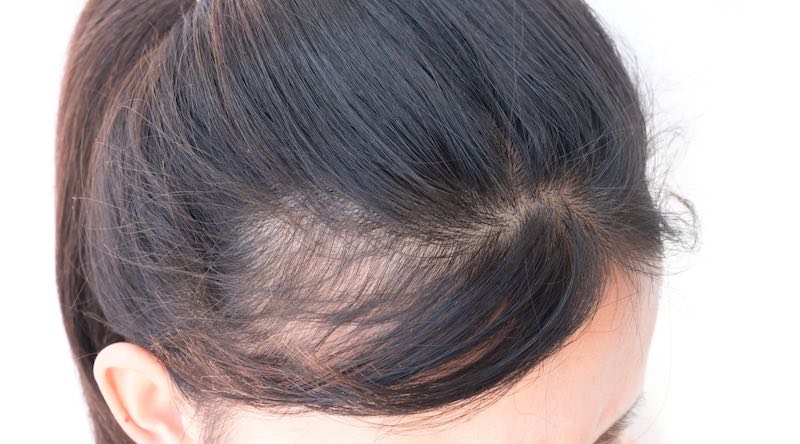
Baldness generally refers to excessive hair loss from your scalp. Hereditary hair loss with age is the most frequent cause of baldness. Some people choose to let their hair loss run its course untreated and unhidden. Others may additionally cover it up with hairstyles, makeup, hats or scarves. And still, others choose one of the treatments available to prevent further hair loss and to fix growth.
There are on an average 100,000 to 150,000 hairs on the human scalp. Hairs develop from follicles that are sac-like structures under the skin. At any time 90% of the hair is in the growth phase, which lasts an average of 4 to 5 years, after which it enters the resting phase, which lasts for 2 to 4 months. At the end of the resting phase, the hair falls out naturally and is replaced through a new hair. Some hair loss, 50 to 150 per day, is normal. Baldness or alopecia outcomes when hair loss takes place at an abnormally high rate, replacement occurs at an abnormally gradual rate or when normal hairs are changed by thinner, shorter ones.
CAUSES:
Heredity and aging, Hormonal changes, A serious sickness or fever, Medication such as cancer chemotherapy or too much Vitamin A, Emotional or bodily stress, A self-induced reduction of hair by pulling it out (traction alopecia), Poor nutrition, Disease, Childbirth, Scalp Infection, Hair Treatments and use of chemicals.
TYPES:
Androgenic alopecia is also known as male pattern baldness is the most common type of hair loss. It occurs more frequently in men than in women. It is a permanent type of hair loss and occurs in a characteristic pattern on the scalp. The hair loss begins at the temples and at the top of the head towards the back, causing a receding hairline and a bald spot. Balding may begin at any age after puberty and can range from a partial loss to complete baldness. Hormonal imbalance, mainly testosterone, and genetic factors are responsible for this type of hair loss.
Alopecia areata leads to patchy hair loss on the scalp. The exact cause is not known, but it is thought to be the result of the bodyís immune system attacking the hair follicles.
Traction alopecia is caused due to long-term pulling on the hair. This is caused by certain hairstyles, such as tight braids. The hair loss is usually reversible once the cause of the pulling is eliminated.
PREVENTION
- Most baldness is caused by genetics (male-pattern baldness and female-pattern baldness). This type of hair loss is not preventable.
- These tips may help you avoid preventable types of hair loss:
- Avoid tight hairstyles, such as braids, buns or ponytails,
- Avoid compulsively twisting, rubbing or pulling your hair,
- Treat your hair gently when washing and brushing. A wide-toothed comb may help prevent pulling out hair,
- Avoid harsh treatments such as hot rollers, curling irons, hot oil treatments, and permanents,
- Avoid medications and supplements that could cause hair loss,
- Protect your hair from sunlight and other sources of ultraviolet light,
- Stop smoking.
